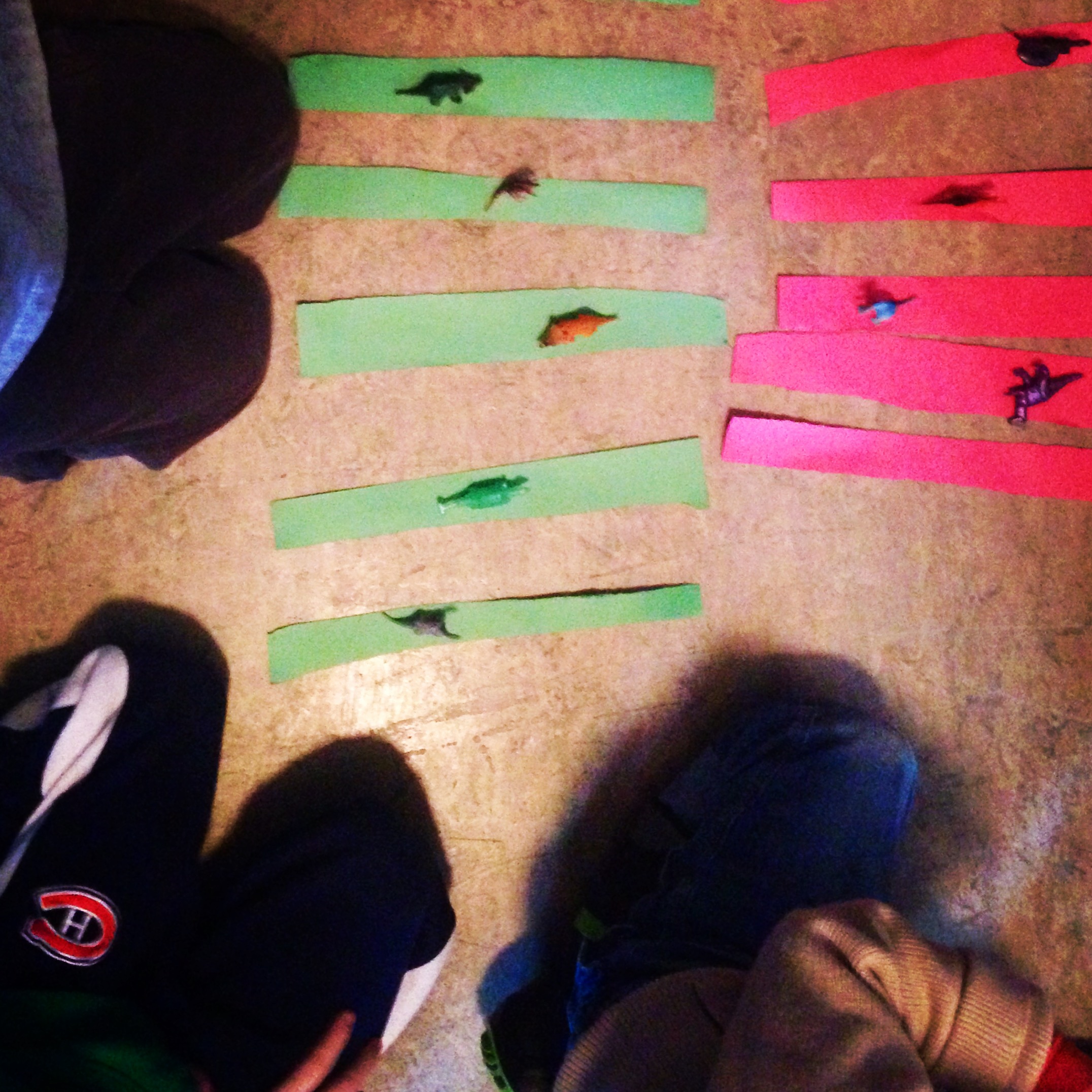Dinosaur Math
For the preschoolers and kindergarteners, I like to use a day of dinosaur excitement as a chance to do some basic math, focusing on building a familiarity with (cardinal) number words. One reason for this is that the kids in my classes are as young as 3 years old, and there is good reason to assume that the girls have had less number exposure than the boys:
Our results suggest that even at ages as young as 22 months, American parents draw boys’ attention to numerical concepts far more often than girls’. Indeed, parents speak to boys about number concepts twice as often as they do to girls.
and further:
This study suggests that gender-stereotypical views remain a strong influence on how parents perceive children’s math interests and abilities, and they communicate with boys and girls in-line with such views. Although these stereotypical differences in language input are likely inadvertent, and would be denied by most parents, previous work has shown it can still affect children’s interests and self-perceptions of competence.
These two quotes come from the results section of "Gender Biases in Early Number Exposure to Preschool-Aged Children" by Alicia Chang, Catherine M. Sandhofer and Christia S. Brown.
At Saturday Science, I make an effort to use number words regularly, and incorporate them into the lessons for younger kids. So after opening up their dinosaur eggs, I worked with the kids on graphing and measuring.
Graphing
I skipped this activity with the preschoolers, but the kindergarteners got really into it. Some of the dinosaurs the kids uncovered were familiar, and some were brand-new to them.
As a group, we looked at everyone's dinosaur toy and discussed if it was a plant eater or a meat eater. I then gave a green paper to vegetable eaters and red to meat eaters. Then, I invited the meat eaters to "stack" their papers in a row. Same with the plant eaters.
This way, the kids could figure out if there were more plant or meat eaters, or and equal number. We repeated this a few more times, based on what the kids wanted to explore. Did more have horns? Walk on two feet? We even incorporated hypothesizing about which group would be largest for various graphing activities.
Measuring
Dinosaurs were by and large big. The kids of course, all knew this, but I wanted to show them just how big.
Using "kid lengths" as a measurement unit (more or less a meter) we figured out how big various dinosaurs would be. It is a small tragedy that I didn't take pictures of this, because we tried to do this by laying head to toe for the preschoolers, and this itself was a fun, very challenging activity.
Then the kids had to count how many "kid steps" each dinosaur took to cross. Sometimes I do this outside and then we have dinosaur races -- run the length of an apatosaurus, say.
This also worked as a good discussion tool, as kids notice that a triceratops would barely fit in the room, but a T-rex would be too big.
Some dino sizes for your use: Amphicoelias: 58m Triceratops: 8m Stegosaurus: 9m (actually they were sometimes as small as 6.5m) Anklyosaurus: 9m Tyrannosaurus Rex: 12m Albertosaurus: 10m Velociraptor: 1.5m Apatosaurus: 23m
There you have it! Learning about dinosaurs, but actually secretly learning about MATH. Dang I love math.






